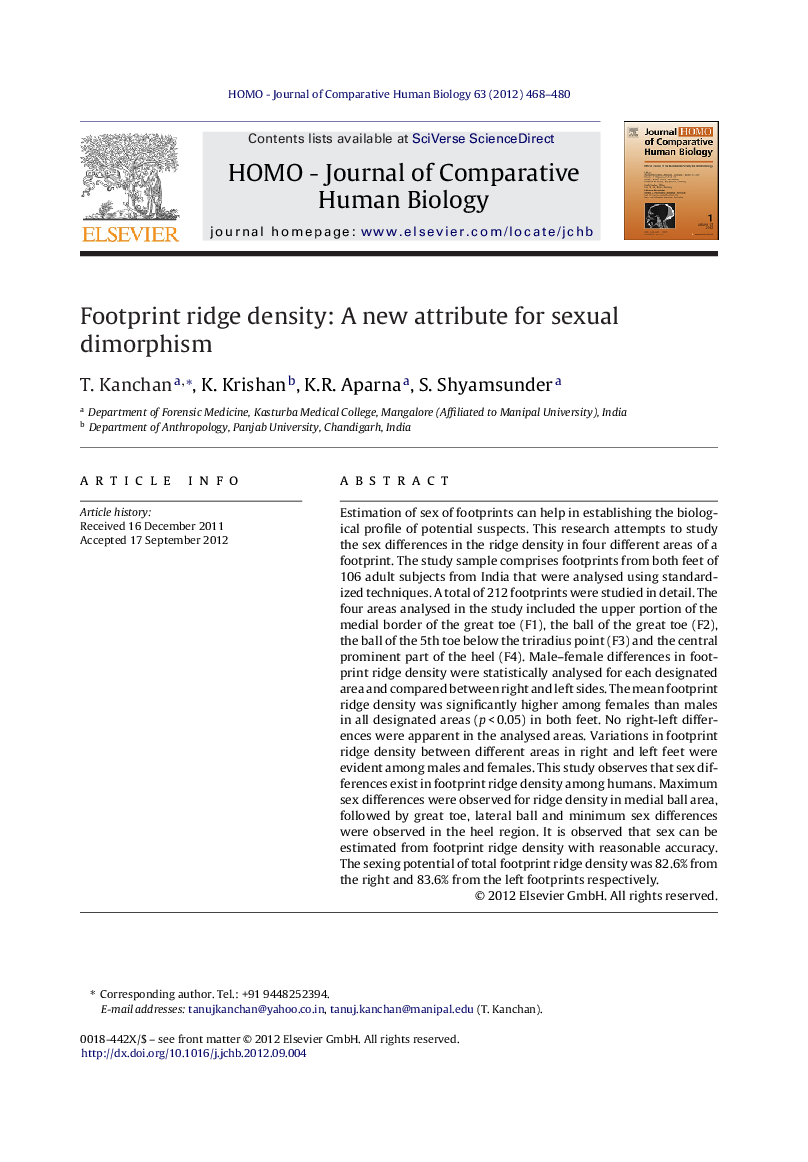| Article ID | Journal | Published Year | Pages | File Type |
|---|---|---|---|---|
| 100157 | HOMO - Journal of Comparative Human Biology | 2012 | 13 Pages |
Estimation of sex of footprints can help in establishing the biological profile of potential suspects. This research attempts to study the sex differences in the ridge density in four different areas of a footprint. The study sample comprises footprints from both feet of 106 adult subjects from India that were analysed using standardized techniques. A total of 212 footprints were studied in detail. The four areas analysed in the study included the upper portion of the medial border of the great toe (F1), the ball of the great toe (F2), the ball of the 5th toe below the triradius point (F3) and the central prominent part of the heel (F4). Male–female differences in footprint ridge density were statistically analysed for each designated area and compared between right and left sides. The mean footprint ridge density was significantly higher among females than males in all designated areas (p < 0.05) in both feet. No right-left differences were apparent in the analysed areas. Variations in footprint ridge density between different areas in right and left feet were evident among males and females. This study observes that sex differences exist in footprint ridge density among humans. Maximum sex differences were observed for ridge density in medial ball area, followed by great toe, lateral ball and minimum sex differences were observed in the heel region. It is observed that sex can be estimated from footprint ridge density with reasonable accuracy. The sexing potential of total footprint ridge density was 82.6% from the right and 83.6% from the left footprints respectively.
